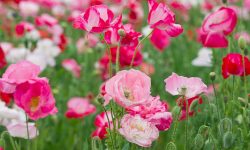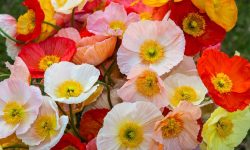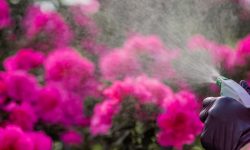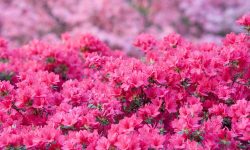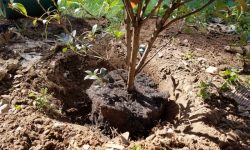Poinsettias are among the most beloved holiday plants, celebrated for their vibrant red, pink, and white bracts. These striking colors bring warmth and festive cheer to homes, offices, and public spaces, making them a centerpiece of seasonal décor. Beyond their beauty, poinsettias are relatively easy to grow with the right care, rewarding gardeners with long-lasting blooms and lush foliage throughout the holiday season.
Successfully growing poinsettias requires attention to light, temperature, and watering. They thrive in bright, indirect sunlight and consistent temperatures, avoiding sudden changes that can stress the plant. Proper fertilization, pruning, and understanding their growth cycle also contribute to healthy, vigorous plants. With the right care, poinsettias can flourish year after year, offering vibrant color, aesthetic appeal, and a festive touch that brightens any space.
Understanding Poinsettia Varieties
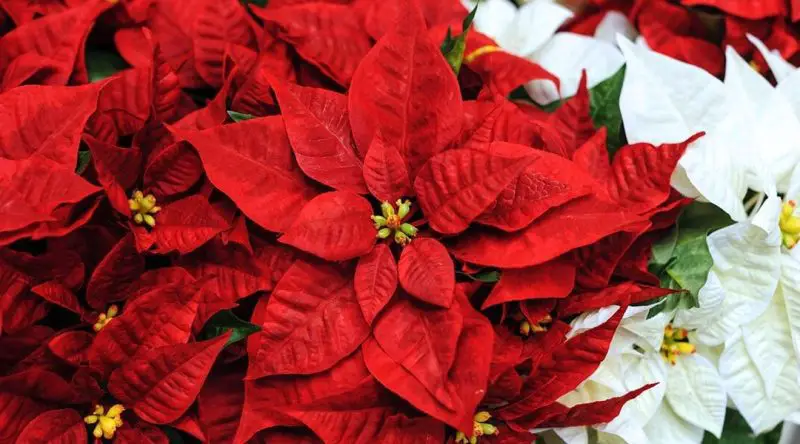
Poinsettias are available in a wide range of varieties, each offering unique colors, shapes, and growth habits. The most popular variety is the classic red poinsettia, admired for its deep, vibrant bracts that enhance holiday décor. Other popular colors include pink, white, cream, and even variegated combinations, allowing gardeners to match different themes or personal preferences. Selecting the right variety is essential for achieving the desired aesthetic and ensuring the plant thrives in specific indoor or outdoor environments.
In addition to color differences, poinsettia varieties vary in size and growth habits. Some compact varieties are ideal for tabletops, shelves, or small indoor spaces, while larger cultivars can serve as dramatic floor displays or outdoor focal points. Understanding the growth potential and preferred environment of each variety helps gardeners provide proper care, including the right pot size, spacing, and pruning techniques. Choosing a variety suited to your space ensures that the plant remains healthy and visually appealing throughout the holiday season.
Specialty poinsettia varieties, such as double-bracted or glittered cultivars, offer unique ornamental appeal. Double-bracted types have multiple layers of colorful bracts, creating a fuller, more luxurious appearance. Glittered or painted varieties add festive sparkle and creative flair for decorative displays. By exploring and selecting from the wide range of poinsettia varieties, gardeners can enjoy personalized, stunning arrangements that capture the spirit of the season while promoting plant health and longevity.
Planting Poinsettias: Soil and Location Tips
Choosing the Right Soil for Poinsettias
Selecting the proper soil is crucial for healthy poinsettias. These plants thrive in well-draining, slightly acidic soil with a pH between 5.5 and 6.5. Heavy or compacted soil can retain too much water, causing root rot and stress, while overly sandy soil may drain too quickly, leaving the plant dehydrated. A high-quality potting mix with added perlite or vermiculite ensures optimal aeration and moisture retention, supporting strong root development and vibrant growth.
Proper soil preparation also enhances nutrient availability. Mixing organic matter, such as compost or peat moss, enriches the soil and improves structure. This combination provides essential minerals while maintaining balanced moisture levels. Gardeners should avoid using untreated garden soil directly, as it may harbor pests or diseases. By carefully selecting and preparing soil, poinsettias establish a strong foundation, encouraging long-lasting blooms and healthy foliage throughout the growing season.
Selecting an Ideal Location
Poinsettias require careful placement to thrive. They perform best in bright, indirect sunlight, which supports photosynthesis and enhances bract color. Direct sunlight can scorch leaves, while insufficient light can result in pale foliage and reduced flowering. For indoor plants, place them near east- or south-facing windows with filtered light. Outdoor poinsettias should be positioned in a sheltered location with morning sun and afternoon shade to avoid excessive heat stress.
Environmental conditions are equally important. Poinsettias prefer consistent temperatures between 65°F and 75°F, avoiding drafts or sudden temperature fluctuations that can cause leaf drop. Humidity levels also influence plant health, with moderate humidity reducing stress and preventing drying of leaves. Choosing the right location ensures optimal growth and vibrant blooms while minimizing environmental stress, allowing poinsettias to flourish and brighten holiday displays.
Watering and Fertilizing Poinsettias for Optimal Growth
Proper Watering Techniques
Watering is critical for poinsettia health and bloom longevity. These plants prefer consistently moist soil but cannot tolerate waterlogged conditions. Overwatering can lead to root rot, while under-watering causes leaves to wilt and bracts to drop prematurely. The best approach is to check the top inch of soil and water thoroughly when it feels dry. Ensure excess water drains freely from the pot or planting area to prevent standing moisture.
Indoor and outdoor watering requirements differ. Indoor plants may need less frequent watering due to stable indoor temperatures, whereas outdoor plants often require more attention, especially during warm, dry periods. Water evenly around the root zone rather than directly on the crown to avoid crown rot. Proper watering practices support healthy foliage, robust root systems, and vibrant bracts, enabling poinsettias to thrive throughout the holiday season.
Fertilizing for Healthy Growth
Fertilization provides essential nutrients that promote lush foliage and abundant blooms. Poinsettias benefit from a balanced, water-soluble fertilizer with equal parts nitrogen, phosphorus, and potassium. Apply fertilizer every two to four weeks during active growth, taking care not to overfeed, which can damage roots or reduce flowering. Fertilizing during dormancy is unnecessary and may stress the plant.
Organic alternatives, such as compost teas or diluted fish emulsion, can also support long-term soil health while supplying nutrients. Consistent feeding encourages stronger stems, fuller bracts, and vibrant color, enhancing the plant’s aesthetic appeal. Combined with proper watering, regular fertilization ensures poinsettias remain healthy, vigorous, and visually striking throughout their growing season.
Pruning and Maintenance Tips for Poinsettias
Pruning Poinsettias for Healthy Growth
Pruning is essential to maintain poinsettia health and encourage bushier growth. After the bracts fade, remove any dead or yellowing leaves and spent blooms. Use clean, sharp scissors or pruning shears to cut back stems, taking care not to damage the crown. This process redirects energy to the remaining stems and encourages new shoots for the next flowering season. Regular pruning also stimulates lateral growth, resulting in a fuller, more attractive plant.
In addition, pruning improves airflow around the plant, which reduces the risk of fungal infections and pest infestations. Indoor poinsettias benefit from post-holiday trimming, keeping plants compact and manageable, while outdoor plants require more strategic pruning to shape growth and prevent overcrowding. By incorporating routine pruning into your care regimen, you support both aesthetics and plant health. Consistent pruning ensures stronger stems, vibrant bracts, and an overall more resilient plant capable of producing lush, colorful displays year after year.
General Maintenance Practices
Maintaining poinsettias extends beyond pruning, encompassing careful monitoring of light, temperature, and humidity. Keep indoor plants in bright, indirect sunlight, while outdoor plants should be placed in sheltered locations that provide morning sun and afternoon shade. Sudden temperature changes or drafts can stress the plant, causing premature leaf drop and weakened growth. Maintaining consistent environmental conditions ensures optimal health and vibrant color.
Regular cleaning of fallen leaves, old flowers, and debris from the soil surface helps prevent disease and deters pests. Inspect plants routinely for signs of aphids, spider mites, or fungal infections, and address any problems promptly using appropriate organic or chemical treatments. Proper watering, fertilization, and monitoring of plant health complement these maintenance practices. By integrating these strategies, gardeners can enjoy poinsettias that remain vigorous, beautiful, and bloom abundantly for multiple seasons, providing long-lasting festive cheer.
Overwintering and Long-Term Care for Poinsettias
Overwintering Poinsettias Indoors
Poinsettias are sensitive to cold and require careful overwintering to survive and thrive for the next season. Indoor plants should be kept in bright, indirect light and away from drafts, heaters, or air conditioning vents, which can cause stress or leaf drop. Maintaining temperatures between 65°F and 75°F ensures that the plant remains healthy and can slowly enter its natural dormant phase. During this period, reduce watering, allowing the soil to remain slightly moist but never soggy, which prevents crown rot and encourages root stability.
Proper overwintering also involves monitoring humidity levels. Dry indoor air can lead to leaf desiccation and weak stems, so using a humidifier, misting occasionally, or placing the plant on a tray with water and pebbles helps maintain adequate moisture in the air. Avoid fertilizing during dormancy, as the plant is not actively growing. Inspect the plant for pests periodically, even indoors, as aphids or spider mites can survive in warm environments. By following these practices, indoor poinsettias retain healthy foliage, recover fully, and prepare for vigorous new growth and vibrant blooms in the next holiday season.
Outdoor and Long-Term Care
For outdoor poinsettias in mild climates, protection from frost, excessive rain, and fluctuating temperatures is essential. Mulching around the root zone insulates the plant and shields it from cold snaps. Raised beds or well-draining soil prevent waterlogging, which can lead to root rot, and outdoor containers can be moved under shelter during extreme weather. Monitoring sunlight exposure ensures plants receive adequate indirect light while avoiding scorching from harsh winter sun.
Long-term care involves ongoing monitoring of plant health, pruning spent blooms, and maintaining proper soil fertility. Regular fertilization during the active growing season encourages vigorous growth and supports the development of colorful bracts. Seasonal cleaning, removal of fallen leaves, and careful inspection for pests and diseases are critical. By combining overwintering strategies with attentive long-term maintenance, outdoor poinsettias remain resilient, vibrant, and capable of producing stunning displays year after year, ensuring they brighten gardens and holiday décor consistently.
Propagating Poinsettias for More Plants
Propagating poinsettias is a rewarding way to expand your collection and enjoy vibrant holiday blooms year after year. The most common method is through stem cuttings taken during the plant’s active growth period, typically in late spring or early summer. Select healthy, non-flowering stems and cut sections about 4 to 6 inches long. Remove the lower leaves to expose nodes, which will develop roots once planted in a well-draining propagation medium.
After preparing the cuttings, dip the cut ends in rooting hormone to encourage root formation and plant them in a mixture of peat and perlite or sand. Keep the soil lightly moist and maintain a warm, humid environment, ideally around 70°F to 75°F, to support successful rooting. Covering the cuttings with a plastic dome or placing them in a humidity-controlled propagator helps prevent moisture loss and accelerates root development. Within a few weeks, new roots should form, signaling readiness for transplanting.
Once the cuttings have established a strong root system, gradually acclimate them to normal indoor or outdoor conditions. Transplant them into nutrient-rich, well-draining soil and provide bright, indirect light. Continue to monitor water, temperature, and humidity as the young plants grow. With proper care, propagated poinsettias will develop into healthy, mature plants capable of producing vibrant bracts and lush foliage. This method allows gardeners to enjoy multiple generations of poinsettias while ensuring long-term sustainability and consistent holiday displays.
Pest and Disease Management for Poinsettias
Common Pests Affecting Poinsettias
Poinsettias are susceptible to several common pests that can damage leaves, stems, and bracts. Aphids, whiteflies, and spider mites are the most frequent offenders. Aphids feed on plant sap, causing distorted growth and sticky residue on leaves, while whiteflies weaken the plant by consuming nutrients and transmitting diseases. Spider mites thrive in dry, indoor conditions, leaving tiny yellow spots and webbing on foliage. Identifying pest infestations early is critical for successful management.
Regular inspection is essential to prevent pest populations from becoming severe. For minor infestations, wiping leaves with a damp cloth or spraying with insecticidal soap can be effective. Maintaining proper humidity and avoiding overcrowding reduces stress, making plants less attractive to pests. For persistent problems, horticultural oils or targeted chemical treatments can be applied carefully, ensuring safety for the plant and surrounding environment. By combining monitoring and proactive treatment, poinsettias remain healthy and visually striking.
Preventing and Managing Diseases
Poinsettias can also be affected by fungal and bacterial diseases, such as powdery mildew, botrytis blight, and root rot. Overwatering, poor air circulation, or contaminated soil often contribute to these issues. Powdery mildew appears as white, powdery spots on leaves, while botrytis causes gray mold and tissue decay. Root rot, caused by waterlogged soil, weakens the plant and can lead to sudden death if not addressed promptly.
Preventive measures include proper watering techniques, well-draining soil, and adequate spacing for airflow. Remove any diseased leaves or flowers immediately to prevent spread. For fungal infections, applying a fungicide can control the problem, while maintaining cleanliness and sanitation reduces future risks. Monitoring plants regularly and responding to early signs of disease ensures poinsettias remain vibrant, healthy, and free from debilitating infections, guaranteeing strong growth and stunning blooms.
Seasonal Lighting Adjustments for Optimal Bract Color
Poinsettias rely heavily on the length of daylight to develop their vibrant bracts. Short days and long nights signal the plant to begin its flowering process, typically in late fall. Providing the right amount of darkness each day is essential, as even brief exposure to light during the dark period can delay or inhibit bract coloration. For indoor growers, maintaining a consistent schedule of 12–14 hours of uninterrupted darkness helps ensure that the bracts reach their full red, pink, or white intensity.
Supplemental lighting can be used to support growth and maintain plant health in dimly lit rooms. Bright, indirect light during the day encourages strong foliage and healthy stems, providing a solid foundation for colorful bracts. Positioning poinsettias near east- or south-facing windows or using artificial grow lights ensures the plant receives sufficient illumination without direct sunlight that could scorch the leaves. Consistent lighting schedules help synchronize the plant’s internal clock, promoting timely and uniform blooming.
Monitoring and adjusting light exposure also allows gardeners to manipulate bloom timing for specific occasions or displays. For example, extending the dark period slightly earlier in the season can encourage earlier coloration, ideal for holiday events. Combining careful attention to photoperiod with proper watering, temperature, and fertilization maximizes both the vibrancy and longevity of the blooms. Understanding and managing light requirements ensures that poinsettias develop their characteristic festive colors, making them the perfect centerpiece for holiday décor.
Companion Planting Ideas with Poinsettias
Pairing poinsettias with complementary plants can enhance both visual appeal and overall plant health. Evergreen shrubs, such as dwarf conifers or boxwoods, create a contrasting backdrop that highlights the vibrant bracts. Winter-flowering plants like hellebores or winter pansies add additional color and texture, creating a layered and dynamic display. Selecting companions with similar light, water, and soil requirements ensures that all plants thrive together without compromising health.
When planning a container arrangement, combining poinsettias with trailing plants such as ivy or ornamental grasses can soften edges and create a fuller appearance. Using different heights, textures, and colors adds depth to displays, making them more visually engaging. Gardeners can also experiment with seasonal accents like holly branches or decorative moss to further enhance holiday aesthetics while complementing the natural beauty of the poinsettias.
Companion planting also benefits plant maintenance and disease prevention. Strategic spacing and proper placement improve air circulation, reducing the risk of fungal infections and pest infestations. Companion plants that are less susceptible to similar pests can act as natural buffers, helping to protect more delicate poinsettias. By thoughtfully choosing plant partners, gardeners can create stunning, sustainable holiday arrangements that remain vibrant throughout the season, providing a cohesive, festive look that combines color, texture, and healthy growth.
Creative Display and Decoration Tips
Beyond planting, styling poinsettias effectively can significantly enhance their festive appeal. Decorative pots, seasonal ribbons, and natural accents like pinecones, cinnamon sticks, or evergreen branches complement the vibrant bracts, creating visually stunning displays. Choosing pots that match holiday themes or color schemes adds elegance and ensures the plants blend seamlessly with existing décor. Thoughtful presentation elevates the poinsettia from a simple plant to a centerpiece that draws attention and admiration.
Rotating poinsettias regularly is another key technique for maintaining even growth and vibrant coloration. Uneven light exposure can cause leaves to droop or bracts to develop unevenly, reducing overall visual impact. By periodically turning plants, gardeners ensure all sides receive adequate light, resulting in symmetrical, lush foliage. Additionally, grouping plants at varying heights or using tiered stands can create depth and dimension in displays, making arrangements appear more dynamic and professional.
Incorporating poinsettias into larger seasonal arrangements enhances their impact further. Combining them with ornamental grasses, evergreens, or flowering plants creates layered textures and rich color contrasts. Seasonal elements such as twinkling lights, holiday figurines, or ornaments can be integrated to create a festive atmosphere. By thoughtfully combining display techniques and decorative elements, gardeners can maximize both the aesthetic and emotional impact of poinsettias, transforming them into vibrant focal points that bring holiday cheer and lasting visual delight.
FAQ About Growing Poinsettias Successfully
When is the best time to plant poinsettias?
The best time to plant poinsettias is in early fall when temperatures are stable. This timing allows the plants to establish roots before the holiday season. Ensure they are placed in well-draining soil with indirect sunlight, avoiding drafts or sudden temperature changes for optimal growth and long-lasting bracts.
How much light do poinsettias need?
Poinsettias thrive in bright, indirect light. Indoor plants should be placed near east- or south-facing windows, while outdoor plants benefit from morning sun and afternoon shade. Too much direct sunlight can scorch leaves, whereas insufficient light may result in weak stems and pale bracts, reducing overall bloom quality.
How should I water poinsettias?
Water poinsettias when the top inch of soil feels dry, ensuring even moisture without waterlogging. Avoid watering directly on the crown to prevent rot. Indoor plants may require less frequent watering than outdoor plants. Adjust watering based on temperature and humidity for healthy foliage and long-lasting blooms.
How can I prevent pests and diseases?
Regularly inspect plants for aphids, spider mites, or fungal infections. Maintain proper watering, air circulation, and spacing to reduce stress. Remove debris, prune dead leaves, and use insecticidal soap or fungicides if needed. Healthy plants are naturally more resistant to pests and diseases, supporting vibrant growth.
Can poinsettias be propagated for more plants?
Yes, poinsettias can be propagated through stem cuttings taken during active growth. Use healthy stems, remove lower leaves, and place cuttings in a well-draining medium with rooting hormone. Maintain warmth and humidity until roots form. Successfully propagated plants will grow into mature poinsettias with bright, festive bracts.
Conclusion
Poinsettias are iconic holiday plants that bring vibrant color and festive cheer to any space. With proper planting, watering, fertilization, and maintenance, these plants thrive indoors and outdoors, producing lush foliage and stunning bracts. Understanding their growth cycle, choosing the right varieties, and preventing pests or diseases ensures long-lasting blooms. Propagation and overwintering techniques allow gardeners to enjoy poinsettias year after year. By combining attentive care with seasonal practices, anyone can cultivate healthy, resilient plants that brighten homes and gardens, creating unforgettable holiday displays and spreading joy throughout the festive season.

